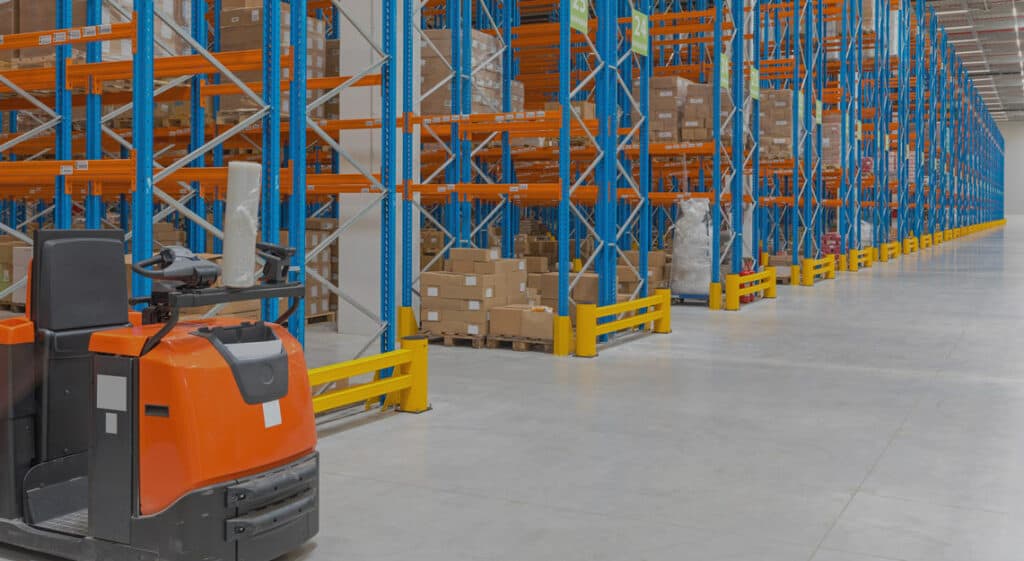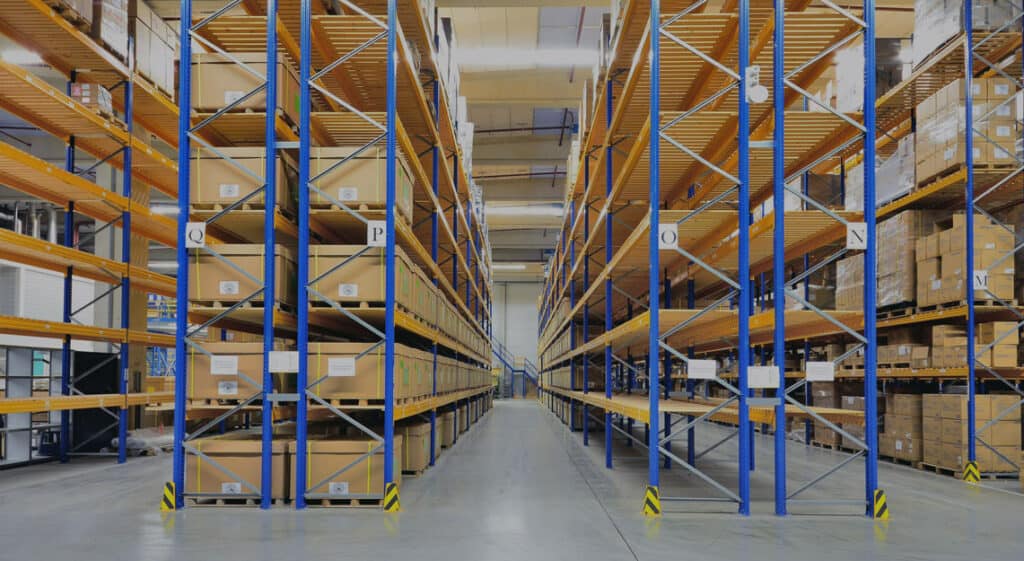Optimize Your Warehouse with Proper Pallet Racking Spacing
In any warehouse, efficiency and safety are the two most important factors in everyday operations. Keeping your team safe and sound while protecting inventory and equipment should always be top of mind.
So, when it comes to pallet racking spacing, you should be careful during the initial planning, design and installation phases.
Careful measurement ensures optimal use of space, easy accessibility and, most importantly, safety. Cut corners here, and you might face accidental collisions, rack collapses and other serious safety hazards.
Let’s explore pallet rack spacing in more detail and delve into some specific requirements to keep your warehouse and employees safe and sound.
Pallet Rack Spacing and Building Structures
Spacing between your pallet racking system and the broader warehouse structure is more than merely aesthetic. In reality, it’s a complex integration of systems that, when done right, supports efficient operations and a high standard of safety.
These warehouse structures include:
- Walls
- Support columns
- Support beams
- Other structures and equipment
Manufacturers design pallet racking systems to be stand-alone structures. That means they can withstand the weight of stored goods without any additional support from the greater warehouse structure itself.

The Hazards of Connecting Pallet Racks to Building Components
Both pallet rack design and warehouse design rely on skilled engineering professionals. They do the work of calculating what’s safe and sound.
So, while it might be tempting to connect pallet racks directly to the structural components of the building for added stability, this approach can quickly lead to unintended and dangerous consequences.
With there being 2.3 cases of warehouse injuries per 100 full time employees reported in 2021, this emphasis on safety can’t be understated.
Building components just can’t handle the additional load or forces that pallet racks might transfer to them. When racks are physically connected to building elements such as walls or columns, forces resulting from the stored goods, any applied weight or even accidental collisions can directly transfer to these building structures.
These forces could, over time, lead to structural integrity issues.
It could happen instantly, or it could happen after a few months. Either way, the result is, at best, worn equipment and, at worse, immediate structural failure.
At the end of the day, if you’re not an engineer, leave the structural design up to the pros.
Specific Requirements for Pallet Racking Spacing
Installing pallet racking without a proper understanding of pallet spacing requirements is like playing Tetris blindfolded — it just doesn’t work.
There are specific guidelines and rules set by organizations like OSHA or the Rack Manufacturers Institute (RMI) designed to enhance safety and operational efficiency.
In short, the distance between the racks and the building structures should be enough to prevent any contact that may occur due to vibrations, impacts or seismic events. These disturbances could arise from routine warehouse activities, accidents or natural disasters, and maintaining appropriate distances can minimize potential damage.
When it comes to measuring these distances, you should calculate distance as a percentage of overall racking height. This helps to scale the space appropriately based on the size of the racking system.

Here are some general rules to abide by:
- Down-Aisle Direction: the distance between the pallet racks and the building structure in the down-aisle direction should be at least 5% of the racking height.
- Cross-Aisle Direction: in the cross-aisle direction, this distance should be at least 2% of the racking height.
Here is an example. Let’s say you have a pallet racking system that sits at 240 inches tall. In this case, the required clearance would be 12 inches (5% of 240) in the down-aisle direction and 4.8 inches (2% of 240) in the cross-aisle direction.
It’s worth noting that if the topmost beam elevation of your rack will not change over time, you can use the topmost beam height instead of the total rack height to calculate proper pallet rack spacing.
Taking the time to properly calculate pallet spacing is mission-critical. It might seem like a minor detail, but even a few inches of miscalculation can lead to potential safety hazards.
Considerations for Different Pallet Racking Components
Taking the time to properly calculate pallet spacing is mission-critical. It might seem like a minor detail, but even a few inches of miscalculation can lead to potential safety hazards.
But, beyond down-aisle and cross-aisle pallet rack spacing, how do other components affect the installation process and clearance needs? Let’s explore:
- Between Pallet Loads and Upright Frames: when storing items on pallet racks, spacing between individual loads and between loads and the upright frame is important. A recommended clearance of 3 inches should be maintained.
- Between Loads and Overhead Beams: maintain a minimum of three inches here as well. More space might be necessary for safe handling at top levels, so use your best judgment and add more clearance when appropriate.
- Service Aisle Space: service aisles are the pathways for forklifts and other machinery. As such, the space needed here will depend on the equipment you’re using. For one-way traffic, minimum space might equal the length of the forklift plus six inches on each side.
- Main Aisle Space: the main aisles often see more traffic and are essential for efficient warehouse operations. The space required in the main aisle should be determined according to the lift truck manufacturer’s recommendations.
- Clearance for Sprinkler Systems: another important clearance consideration is for fire suppression systems. To prevent any obstruction to the system in the event of a fire, a minimum clearance of 18 inches between the topmost pallet load and the sprinkler system should be maintained.
Understanding and implementing these clearances in your warehouse helps you keep your team safe and your equipment in working order for years to come.

Ready to Outfit Your Warehouse With the Right Pallet Racking System?
Explore one of the largest selections of used pallet racking in the Nation at East Coast Storage Equipment.CONTACT US
Role of Regular Inspection and Maintenance
Proper installation is only the first step in keeping your warehouse safe. What follows next is just as important. Of course, we’re talking about regular maintenance and inspection.
Pallet racking systems are built to last, but that doesn’t make them impervious to regular wear and tear. Over time, they can get dinged and damaged — which can escalate into significant safety concerns.
That’s where regular rack inspections come in. Frequent and thorough inspections can help identify potential issues early.
From detecting minor damages to the upright frames to noticing misplaced pallets that could be intruding on the minimum required clearances, these inspections help maintain a safer warehouse environment.
During the inspections, you should make note of any damage. Keeping an updated journal of inspection, maintenance and repairs can help you better track the health and longevity of your system.
If you do see areas of concern, act fast to remedy any issues. If need be, consult with storage equipment experts.
Mastering Pallet Rack Spacing with East Coast Storage Equipment
Pallet racking spacing isn’t as complex as you might think. With some general ground rules, and a desire to keep your warehouse safe, you can easily determine the correct clearance for your equipment.
When it comes to safe installation, though, always consider working with a team of professionals. Here at East Coast Storage Equipment, we have decades of experience installing pallet racking systems across the Nation.
We also carry one of the largest selections of used storage equipment, including used pallet racking, so we can help you source and install your system properly.
For more information about our equipment installation services, be sure to connect with the team today.